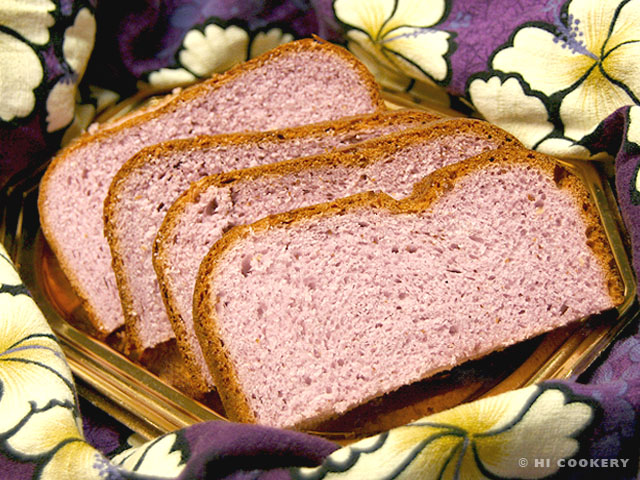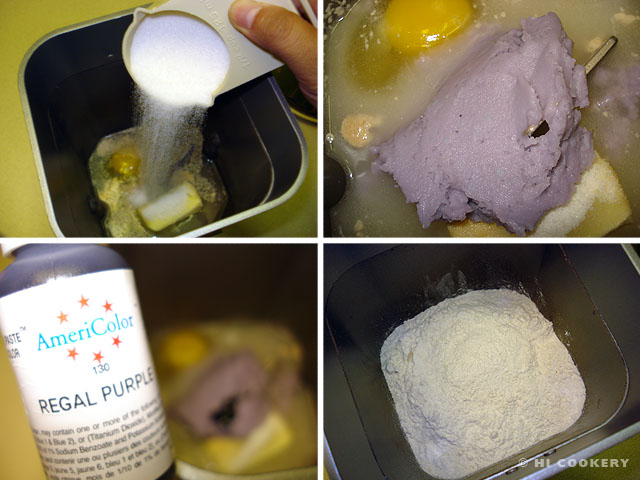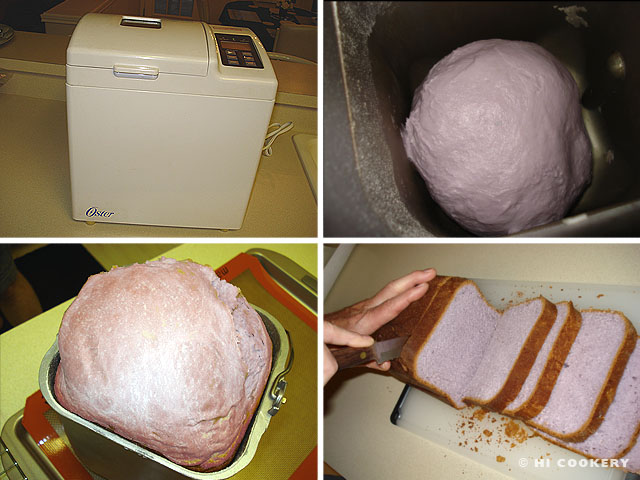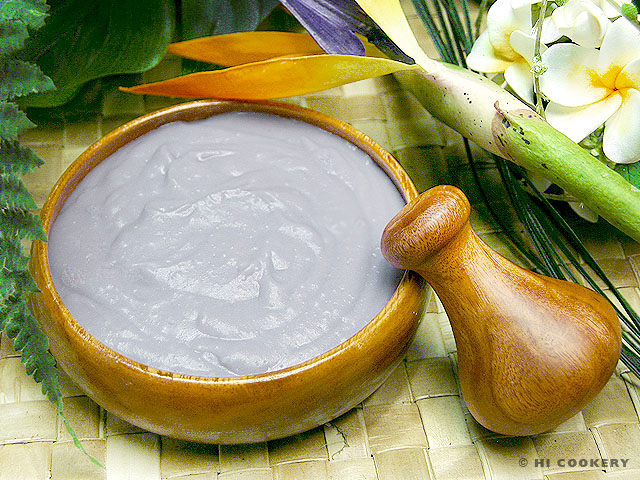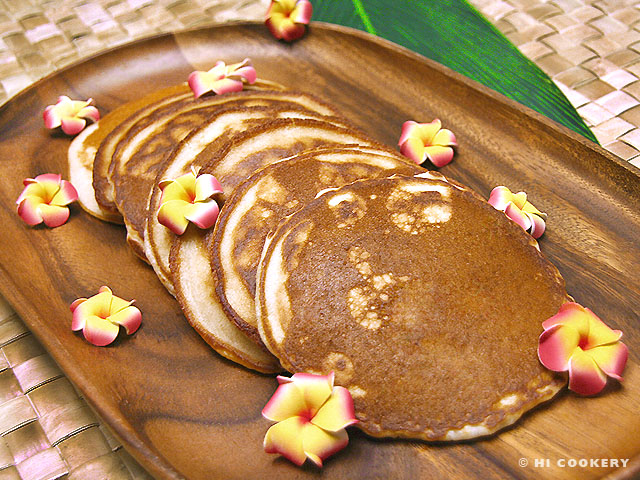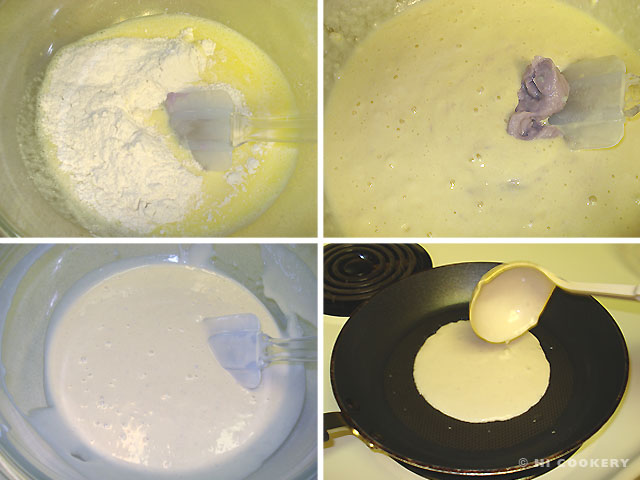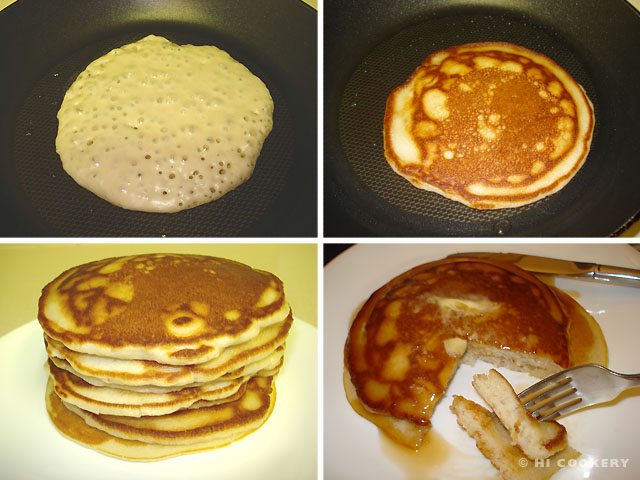Baked Poi Mochi

January 1: New Year’s Day
Islander grew up eating Filipino bibingka during the holidays, special occasions and “just because” in Hawaii. Other Asian immigrants on the islands have a similar sweet treat, like Japanese mochi and Chinese gau, for the new year. The glutinous rice is considered an auspicious food. Its stickiness symbolizes that good luck would stick with you throughout the coming year.
In a Hawaiian twist, Islander added poi powder to the mochi and coconut flakes for a tropical taste. We let our haole neighbors try a little bit of poi mochi for a mainland mini makahiki. Some liked its novelty while others were not used to the gooey texture. At least they tried something new for the new year!
Bake poi mochi for the new year and may good luck stick around! Hauoli makahiki hou.
Recipe
(Adapted from Taro Brand)
Ingredients
- 2 cups mochiko (sweet rice flour)
- ½ – ¾ cup poi powder
- 2 teaspoons baking powder
- 2 ½ cup sugar, granulated white
- 1 ½ cup milk
- 1 (14 ounces) can or 1 ½ cup evaporated milk
- 5 eggs
- 1 teaspoon vanilla
- ½ cup (1 stick) butter, melted
- purple food coloring (optional)
- 1-2 cup coconut flakes (we used unsweetened)
Directions
In a large mixing bowl, combine the mochiko, poi powder, baking powder and sugar.
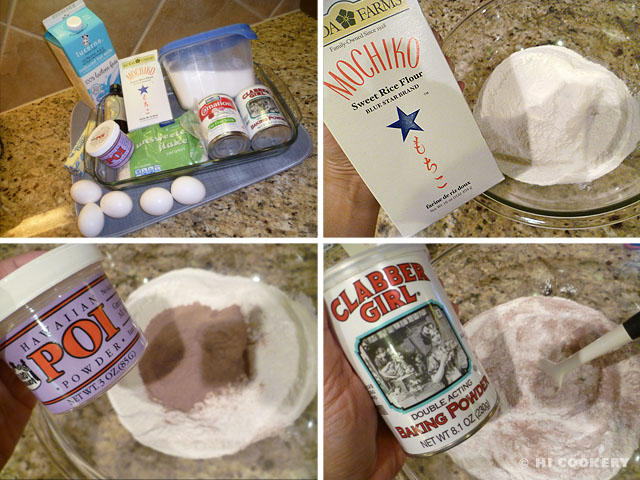
Stir in the milk and evaporated milk. Beat in the eggs. Add the vanilla extract.

Melt the butter and cool slightly. Stir into the mixture. Tint with purple food coloring if desired. Fold in the coconut flakes. Pour into a lightly greased 9×13-inch pan. Bake in a preheated oven at 350 degrees F for 45 minutes to an hour. Check for doneness with a toothpick. Remove from the oven and cool completely before slicing into 24 squares with a plastic knife. Store leftovers in a tightly sealed container.
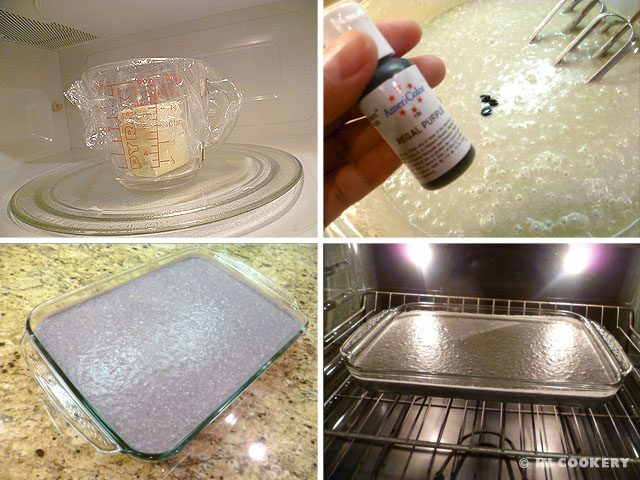
Notes
- The coconut flakes tend to rise to the top in this recipe, making the crust brown and crunchy. As the top can burn easily, place the pan in the middle or lowest rack in the oven.
- There are deep-fried versions of poi mochi balls that Islander likes to eat when she finds them while in Hawaii. This baked custard-like version is simpler to make.
- Mahalo nui loa to Islander’s brother who gifted us with the wooden model poi pounders pictured above.
- Search our blog for other recipes containing poi as an ingredient.
- Happy new year to all our blog readers!
